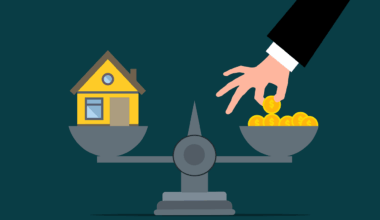Using Dashboards for Real-Time Project Monitoring
Project monitoring and controlling are vital aspects of project management, which ensure that a project stays on track and meets its objectives. Dashboards are instrumental in this process as they provide visual tools that display key performance indicators, project statuses, and metrics in real-time. This allows project managers to quickly identify any issues or delays that may arise and take corrective actions accordingly. With the increasing complexity of projects, the need for immediate visibility into project performance is more critical than ever. By employing dashboards, teams can assess workload distribution, timelines, budgets, and milestones, translating complex data into digestible visual formats. Furthermore, integrating dashboards with existing project management software makes the tracking process seamless and efficient, reducing the time spent on manual reporting. Overall, effective dashboards enhance decision-making, improve accountability, and foster transparency among stakeholders. They are not just tools for monitoring, but also vital components for ensuring that projects meet their intended goals. In the following sections, we will delve deeper into the features and advantages of using dashboards for project management.
Key Features of Effective Dashboards
When designing dashboards for project monitoring, several key features enhance their effectiveness. Firstly, data visualization is paramount; graphical representations of data, such as charts and graphs, allow users to quickly absorb information. In addition, dashboards should provide real-time data updates to reflect ongoing project developments. User-friendly interfaces are also crucial, enabling non-technical stakeholders to easily navigate the information presented. Customization is another essential feature, allowing project managers to tailor the dashboard to their specific needs, displaying relevant metrics that matter most to them. Integration capabilities with tools such as Gantt charts, task lists, and calendar views further enrich the dashboard’s functionality, offering comprehensive insights. Alerts and notifications can be incorporated to alert stakeholders of significant changes or issues requiring immediate attention. Data accuracy is critical; therefore, ensuring that dashboard sources are reliable will bolster decision-making processes. Finally, analytics capabilities can provide deeper insights into trends and forecasts, allowing teams to anticipate potential problems before they arise. In summary, effective dashboards should combine functionality and aesthetic appeal to facilitate smooth project monitoring.
One of the primary advantages of utilizing dashboards for real-time project monitoring is improved communication among team members. Dashboards serve as a centralized platform where all project-related data is accessible, thereby eliminating confusion and ensuring everyone is on the same page. This open line of information fosters enhanced collaboration, allowing various team members to see how their work aligns with project goals. By providing visibility into each other’s tasks and responsibilities, teams can identify potential overlaps and inefficiencies, leading to more refined workflows. Furthermore, regular updates to the dashboard ensure that all stakeholders remain informed of progress and challenges. This transparency cultivates a sense of ownership among team members, leading to increased accountability. Stakeholders can easily track progress against milestones, making it simpler to gauge whether the project is on track. Effective dashboards eliminate the need for excessive email chains or meetings, streamlining communication processes significantly. This real-time access to information supports proactive problem-solving, allowing teams to address issues as they arise rather than waiting for the next status meeting. Therefore, dashboards enhance overall project health by improving communication and allowing teams to work more efficiently together.
Facilitating Data-Driven Decisions
Real-time dashboards empower project managers to make informed, data-driven decisions swiftly. By presenting up-to-date information about project metrics, these dashboards eliminate guesswork and provide a clear picture of the current state of a project. This immediacy allows project managers to respond to issues as they occur rather than relying on retrospective data. The ability to visualize trends over time provides valuable insights into project performance and resource utilization, assisting managers in identifying patterns that can affect future projects. Furthermore, dashboards can facilitate the analysis of team performance, aiding in the identification of high performers and areas for improvement. When project data is easily accessible, managers can hold discussions and strategize based on real-time findings rather than assumptions or outdated figures. Consequently, this accelerates the decision-making process and enhances responsiveness to challenges. Integrating predictive analytics within dashboards can further refine decision-making, allowing team leaders to forecast resource needs, project end dates, and budget allocations more accurately. By leveraging data-driven insights, project managers can navigate complexities and ensure project success, all while minimizing risks along the way.
Moreover, the adaptability of dashboards is another reason for their importance in project monitoring and controlling. Projects often undergo changes due to evolving client requirements, market conditions, or team dynamics. With effective dashboards, organizations can quickly adjust metrics and visualizations to reflect changing project parameters. This flexibility enables teams to continually align their tracking tools with current project objectives, ensuring that the right data is available when it is needed most. Dashboards can be customized to display various data angles, whether focusing on budget tracking, timeline management, or resource allocation. This bespoke approach allows project managers the liberty to emphasize different areas based on the context and phase of the project. Furthermore, adaptable dashboards improve the engagement of stakeholders by providing them with the information relevant to their interests or concerns. This capability fosters a culture of transparency and open communication, as stakeholders can easily access important data without extensive explanations or meetings. Ultimately, flexibility in dashboards leads to improved project performance by ensuring that data and reporting models evolve alongside the projects themselves.
Streamlining Reporting Processes
Another notable benefit of utilizing dashboards in project monitoring is the significant streamlining of reporting processes. Traditional reporting methods often require extensive manual data compilation, which can be time-consuming and prone to errors. Dashboards automate data collection, allowing project leaders to generate reports effortlessly with up-to-date information. This automation drastically reduces the effort required to prepare and distribute reports, freeing up valuable time for project managers to focus on other critical tasks. With a few clicks, managers can create customized reports tailored to different stakeholders, providing precisely the information they need in a clear format. This capability improves stakeholder engagement, as they receive relevant information quickly and clearly. Automated reporting does not just save time; it enhances the accuracy of the data being presented. With real-time data feeding into the dashboard, stakeholders can trust that the metrics reflect the current project status. This reliability in reporting fosters better decision-making and support from stakeholders, as they feel confident in the information shared with them. Consequently, efficient reporting can significantly elevate the project’s overall success rate.
Lastly, dashboards improve project tracking and control mechanisms, enhancing the overall management of project objectives. By consistently monitoring performance metrics throughout the project’s lifecycle, teams can adhere more closely to timelines. Dashboards provide visual indicators to help project leaders see when certain milestones are met and identify areas falling behind schedule. This instant visibility enables proactive adjustments and reallocations of resources to meet deadlines more effectively. Additionally, dashboards facilitate risk management by flagging potential issues before they escalate. When used correctly, they can highlight trends, irregularities, or deviations that require attention and guide teams in drafting mitigation plans. The ability to monitor various metrics simultaneously means that leaders can balance quality, cost, and time, optimizing project execution overall. Moreover, dashboards contribute to enhanced accountability, as each team member’s tasks and contributions are visible. By holding individuals accountable for specific metrics or deadlines, teams can enforce a culture of ownership and performance. In this manner, dashboards not only serve as a monitoring tool but also motivate team members to achieve project success effectively.
In conclusion, leveraging dashboards for real-time project monitoring significantly enhances the capabilities of project management teams. As discussed, the ability to visualize critical data, streamline reporting, and facilitate data-driven decisions transforms how projects are managed. The real-time nature of dashboards allows teams to respond quickly to challenges, ultimately improving project outcomes and satisfaction among stakeholders. By promoting transparency and communication, dashboards create an environment conducive to collaboration and innovation. Furthermore, their adaptability ensures that project tracking remains relevant in the face of changing circumstances. Implementing effective dashboard solutions can lead to a more organized approach to project monitoring and controlling. Overall, the integration of dashboards into project management practices is not just beneficial but essential in today’s fast-paced and data-driven project environments. As teams continue to navigate complex projects, the advantages of utilizing dashboards will prove invaluable. Therefore, investing in robust dashboard tools is a strategic move for organizations looking to enhance their project management efforts and achieve success more effectively.


